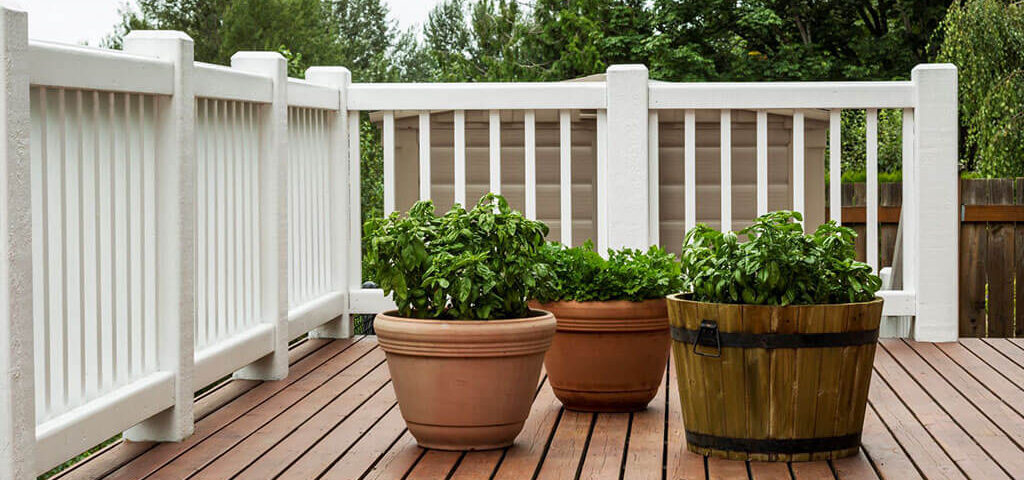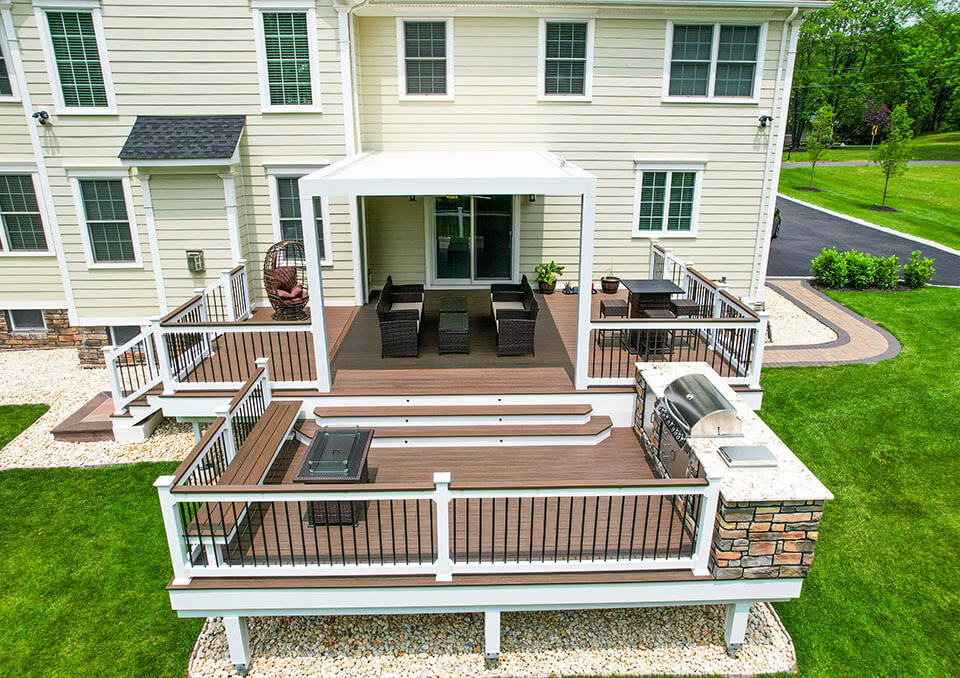A deck is an essential part of the outdoor part of your house, and a well-constructed deck can revamp the look of your outdoor space. Three materials are most commonly used for creating deck railing- vinyl, composite, and aluminum. Royal Deck is here to offer you useful information regarding all of these materials so you can opt for the best-suited material for our outdoor housing area needs. A summarized overview of all the durability, cost, color options, and environmental friendliness of these materials can assist you in making your pros and cons list to help you make the right decision!
Vinyl Deck Railings
These are PVC-based hollow rails that are supported by a wood and aluminum frame to keep them upright.
Cost
Vinyl costs around $60-$80 per linear foot and is more towards the budget-friendly and low-cost option than aluminum and composite.
Maintenance
Vinyl railings are very low-maintenance and easy to manage and wash unless exposed to extreme temperature conditions.
Lifespan
This material has around two decades and has great durability unless extensively exposed to harsh weather conditions. They can cause wear and tear of the material, but besides that, the material is UV-resistant, water-resistant, and scratch-resistant. It is also bacteria and algae resistant and immune to rust and corrosion, making the maintenance process very easy.
Style and Adaptability
Vinyl has a more modern touch and may not fit houses with a vintage or classic aesthetic. The material is also not good at retaining paint, so it does not offer various color options.
Pros: Great durability, minimal maintenance, low cost, and budget-friendly.
Cons: Lack of variety in colors and only fits the modern aesthetic.
Aluminum Deck Railings
The aluminum railing offers the most diverse range of styles and leaves more room for creativity for the creators. It is extremely durable, has a great color range, and has a sufficient lifespan. The material is on the pricier side, but the investment is worth it, especially if you are investing in your outdoor space, which is meant to be a source of joy, peace, and safety for your house.
Aluminum is a high-quality metal with great strength and room for innovation.
Cost
Aluminum rails cost around $90-$120 per linear foot and come on the pricier side of materials.
Maintenance
The maintenance required for aluminum rails is minimal. They do not require extensive care and are easy to maintain. The dust and debris can be easily cleaned off them using soap and water. It is also best for avoiding rust and corrosion.
Lifespan
This material has a long life span as it is a hard material and can easily stay up to 25 years. It is also readily recycled and is environmentally friendly.
Style and Adaptability
Aluminum rails offer a great color variety. The material can easily mold them into any style such as rods, curved, or cocktail. This material offers great versatility in looking vintage or modern and can be altered according to the house's theme.
Pros: Great design variety, durable, strong, sustainable, and can fit any aesthetic of the house. Easy to maintain. Also rust and corrosion-free.
Cons: Expensive
Composite Deck Railings
Composite is a hybrid of wood and plastic fibers that are super solid to be used as railing materials.
Cost
Composite railings cost around $80-$100 per linear foot and are slightly more expensive than vinyl but cheaper than aluminum.
Maintenance
This material is low in maintenance and has great durability as it is not pure wood which tends to rot and suffer from wear and tear over time. They are very strong and sturdy and easy to take care of, and clean when needed.
Lifespan
Composite has around 25-30 years as it is highly resilient against any extreme conditions.
Style and Adaptability
Composite railings are available in a variety of colors and style options. Composite railing has a more natural look and feels to them. They also generally offer more options for design, from lighting to infill (balusters, cable rails, glass) options to colors.
Pros: Great durability, easy to maintain, diverse color and style options, natural look.
Cons: Composite railings are more costly than vinyl.
We use these three options to build beautiful, maintenance-free decks in DuPage, Kane, Kendall, Will, and Cook counties. Every option is available for you to examine and check before making your decision. Reach out to the most trusted deck builder to match railings aesthetic and add to their external beauty.


